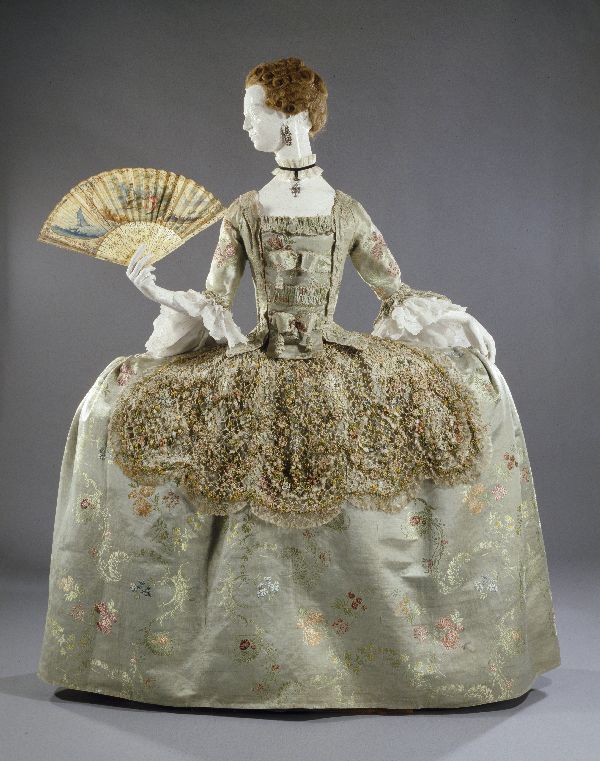A Mantua dress, also known as a Mantua gown, is a style of women’s clothing that was popular in the late 17th and early 18th centuries, primarily during the late Baroque and early Rococo periods. It was characterized by its distinctive construction and silhouette. Here are some key features of the Mantua dress:

Mantua…
- Robe à la Française: The Mantua dress was part of the robe à la française style, which featured a fitted bodice with a back-lacing corset, flowing skirts, and an open front. The back of the gown had a pleated or gathered “sack” back that created a distinct draping effect.
- Elaborate Fabrics: Mantua dresses were often made from sumptuous and luxurious fabrics, including silk, satin, brocade, and velvet. These fabrics were often richly decorated with intricate patterns, embroidery, and embellishments.
- Panniers: The skirt of the Mantua dress was supported by panniers or side hoops, which gave it a wide and voluminous shape. These hoops were made of stiff materials and helped achieve the fashionable silhouette of the time.
- Decorative Elements: Mantua dresses were typically adorned with various decorative elements, including lace, ribbons, bows, and sometimes even gemstones or pearls. These embellishments added to the opulence of the gown.
- Hairstyles and Accessories: Women wearing Mantua dresses often styled their hair in elaborate updos or wigs, and they would complement their attire with accessories like fans, gloves, and jewelry.
- Evolution: The Mantua dress evolved over time, with variations in sleeve styles, neckline designs, and the overall silhouette. It transitioned into the robe à l’anglaise, which had a more fitted back, during the mid-18th century.
Mantua dresses were fashionable attire among the European aristocracy and upper classes during the late 17th and early 18th centuries. They represented the opulence and extravagance of the Baroque and Rococo periods. However, as fashion evolved, this style gradually gave way to new trends in women’s clothing.